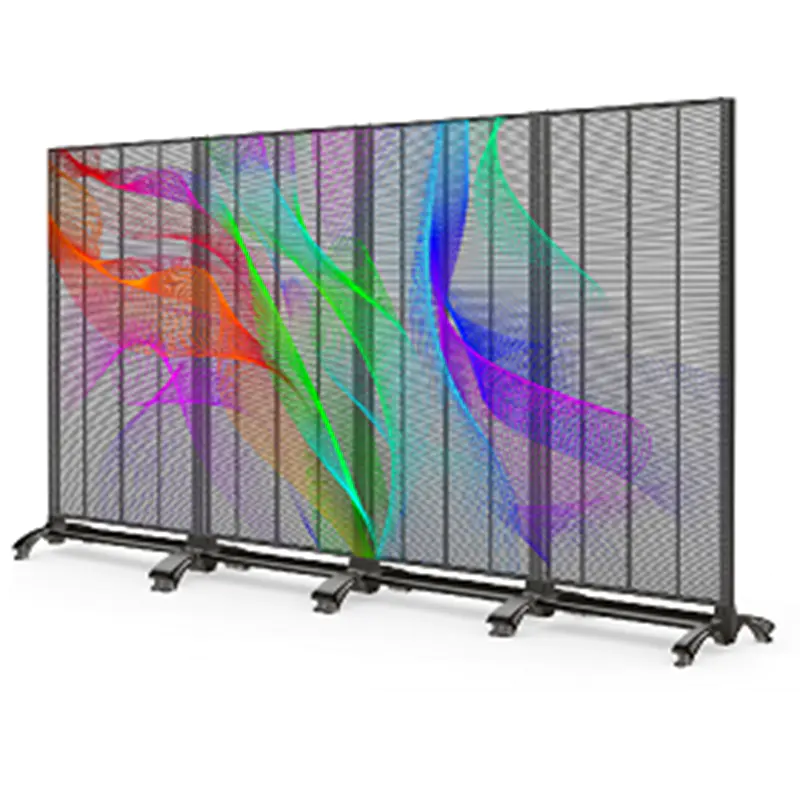The Future of Transparent Display Interactivity and Design
Transparent displays are a cutting-edge technology that blends the real world with digital content, creating an immersive and interactive experience. These displays have the potential to revolutionize various industries, from retail to education, by enhancing user engagement and interaction.
What are Transparent Displays?
Transparent displays are screens that allow users to view both the digital content displayed on the screen and the objects behind the screen simultaneously. This technology combines the functionality of a traditional display with the transparency of glass, creating a unique visual experience.
Benefits of Transparent Displays
1. Enhanced User Experience: Transparent displays provide an immersive and interactive experience by blending the real world with digital content. This allows users to interact with digital information in a more intuitive and engaging way.
2. Versatility: Transparent displays can be used in various applications, from interactive storefronts to educational tools. Their versatility makes them an attractive option for businesses and organizations looking to innovate their user experience.
3. Space-Saving: Transparent displays do not require additional space for projection or display, as they can be integrated into existing surfaces or windows. This makes them an efficient and space-saving solution for businesses.
4. Customization: Transparent displays can be customized to meet specific needs and preferences, such as adjusting the transparency level or integrating touch-sensitive technology. This allows businesses to create a tailored user experience that meets their customers' needs.
Potential Applications of Transparent Displays
1. Retail: Transparent displays can be used in storefronts to showcase products and digital content simultaneously. This allows customers to view products in real-time while accessing additional information or promotions.
2. Education: Transparent displays can be used in classrooms to enhance learning experiences by displaying educational content while allowing students to view the real world through the screen.
3. Transportation: Transparent displays can be integrated into vehicle windows, providing drivers with access to navigation and other digital information without obstructing their view of the road.
4. Advertising: Transparent displays can be used in public spaces to display advertisements or promotional content while allowing viewers to see through the screen and observe their surroundings.
Transparent displays offer a unique and innovative way to enhance user experience and interaction. Their ability to blend the real world with digital content has the potential to revolutionize various industries, from retail to transportation. As this technology continues to develop, we can expect to see more innovative and engaging applications of transparent displays in the future.
What are Transparent Displays?
Transparent displays are screens that allow users to view both the digital content displayed on the screen and the objects behind the screen simultaneously. This technology combines the functionality of a traditional display with the transparency of glass, creating a unique visual experience.
Benefits of Transparent Displays
1. Enhanced User Experience: Transparent displays provide an immersive and interactive experience by blending the real world with digital content. This allows users to interact with digital information in a more intuitive and engaging way.
2. Versatility: Transparent displays can be used in various applications, from interactive storefronts to educational tools. Their versatility makes them an attractive option for businesses and organizations looking to innovate their user experience.
3. Space-Saving: Transparent displays do not require additional space for projection or display, as they can be integrated into existing surfaces or windows. This makes them an efficient and space-saving solution for businesses.
4. Customization: Transparent displays can be customized to meet specific needs and preferences, such as adjusting the transparency level or integrating touch-sensitive technology. This allows businesses to create a tailored user experience that meets their customers' needs.
Potential Applications of Transparent Displays
1. Retail: Transparent displays can be used in storefronts to showcase products and digital content simultaneously. This allows customers to view products in real-time while accessing additional information or promotions.
2. Education: Transparent displays can be used in classrooms to enhance learning experiences by displaying educational content while allowing students to view the real world through the screen.
3. Transportation: Transparent displays can be integrated into vehicle windows, providing drivers with access to navigation and other digital information without obstructing their view of the road.
4. Advertising: Transparent displays can be used in public spaces to display advertisements or promotional content while allowing viewers to see through the screen and observe their surroundings.
Transparent displays offer a unique and innovative way to enhance user experience and interaction. Their ability to blend the real world with digital content has the potential to revolutionize various industries, from retail to transportation. As this technology continues to develop, we can expect to see more innovative and engaging applications of transparent displays in the future.


.jpg?imageView2/1/format/webp)









